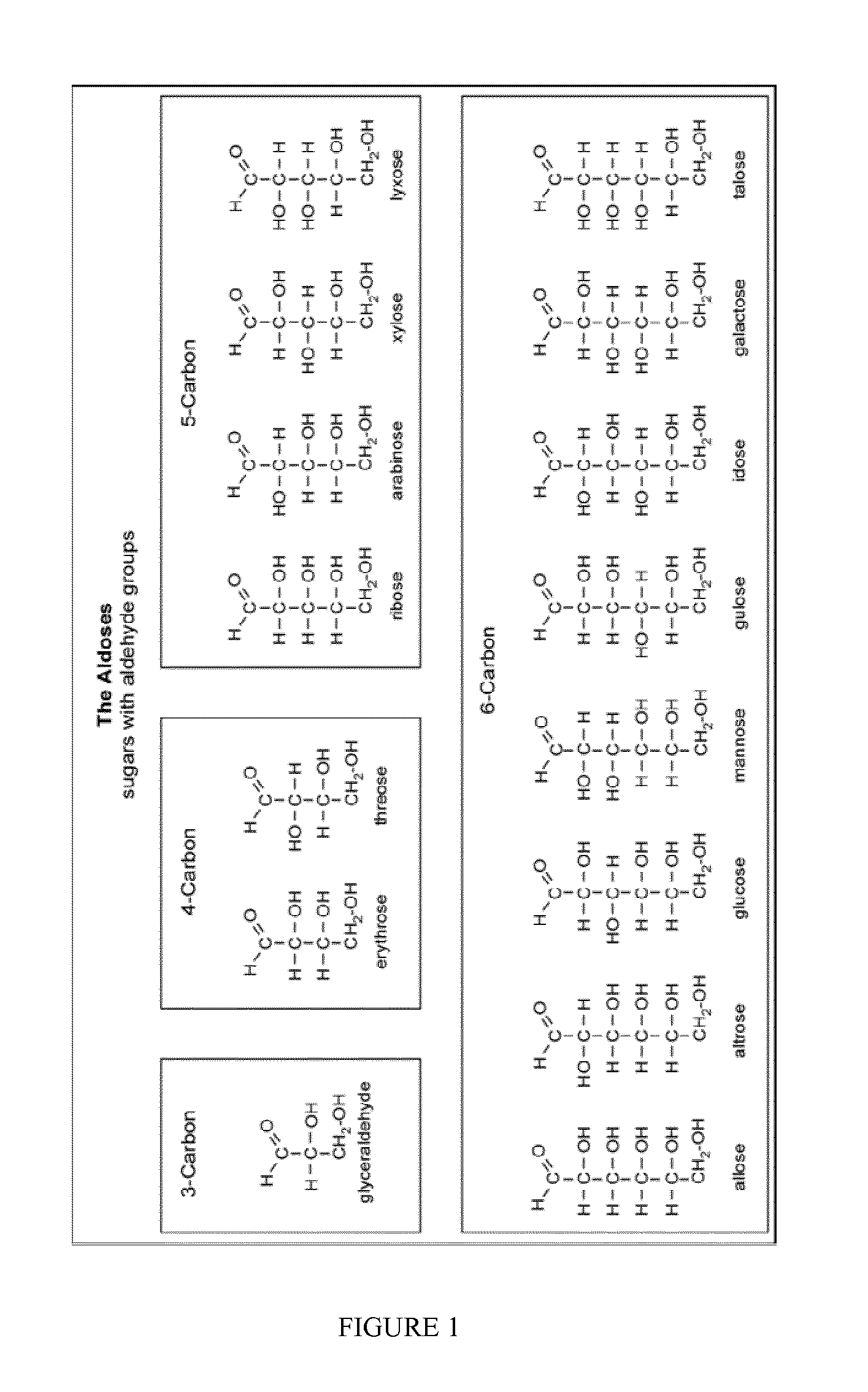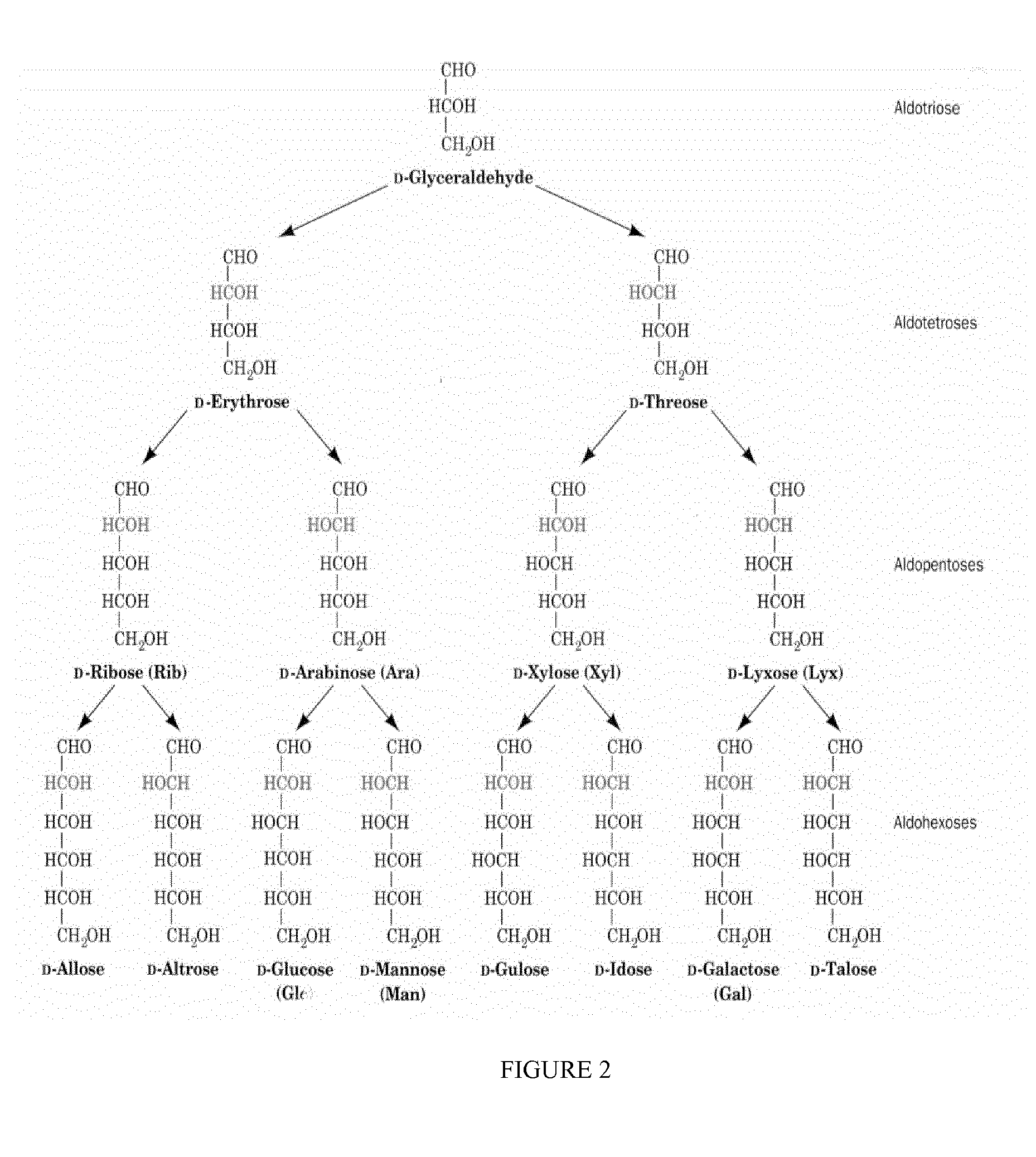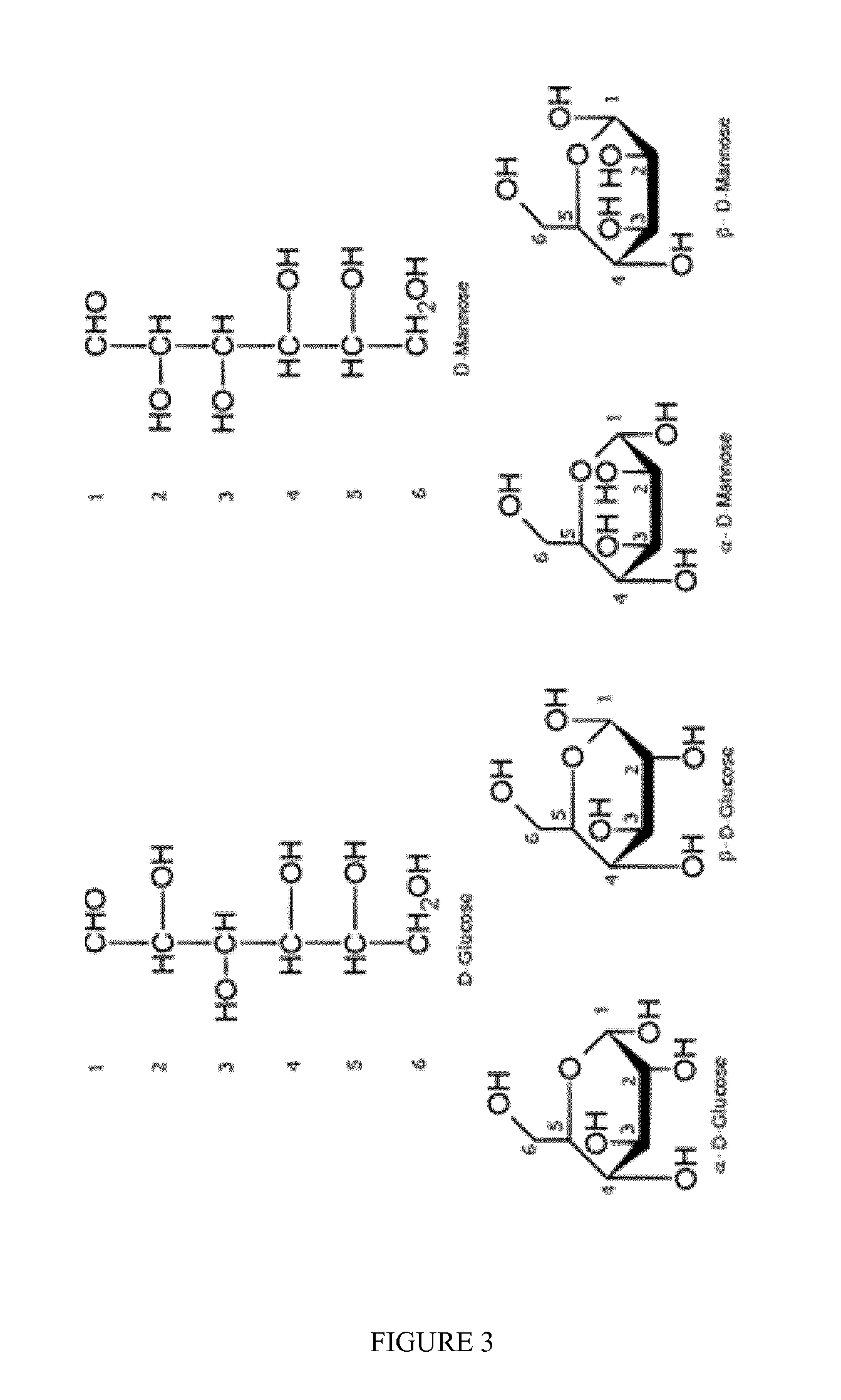Isomerisation of c4-c6 aldoses with zeolites
a technology of c4-c6 aldoses and zeolites, which is applied in the preparation of sugar derivatives, monosaccharides, sugar derivatives, etc., can solve the problems of large quantity of enzymes, unstable monosaccharides, and low enzyme activity of enzymes
- Summary
- Abstract
- Description
- Claims
- Application Information
AI Technical Summary
Benefits of technology
Problems solved by technology
Method used
Image
Examples
example 1
(C6-sugars, Illustrated by Isomerization of Glucose and Mannose to Fructose)
Chemicals
[0072]Glucose (99.5%), fructose (99%), mannose (99%), methanol (99.9%), ethanol (99.9%) and propanol (99.7%) were purchased from Sigma-Aldrich. All the commercially available zeolites used throughout this study were kindly provided by Zeolyst International. The zeolites are pure and do not contain any binder material. The zeolites received in the NH4-form were calcined at 550° C. in static air for 6 h prior to use in order to produce the acidic form (H-form).
Reaction Procedure
[0073]The reaction was carried out in methanol following a two-step batch mode of operation. The proposed reaction pathway for the conversion of glucose to fructose is shown in Scheme 3. In the first step, glucose is isomerized to fructose that reacts immediately with the methanol present in the reaction media as a solvent to form methyl fructoside. In order to obtain fructose, water is added in a second step to hydrolyze the m...
example 2
(C5-Sugars)
[0090]Isomerization of Xylose The isomerization of the C5 sugar xylose to xylulose is an important transformation in carbohydrate chemistry, among other reasons, because xylulose is an intermediate compound to make, e.g. furfural by dehydration. Accordingly, the following experiments were carried out with xylose as starting sugar over solid zeolite catalysts.
Chemicals
[0091]Xylose (99.5%), xylulose (99%), methanol (99.9%), ethanol (99.9%) and propanol (99.7%) were purchased from Sigma-Aldrich. D-xylulose (1.0 M aqueous solution) was purchased from Omicron Biochemicals. All the commercially available zeolites used throughout this study were kindly provided by Zeolyst International. The zeolites were treated prior to use in order to produce the acidic form (H-form) as described in Example 1.
Reaction Procedure
[0092]The reaction was carried out in methanol following a two-step batch mode of operation, unless otherwise described. The proposed reaction pathway for the conversion...
example 3
(C4-Sugars)
Chemicals
[0102]Aqueous solution of erythrose (0.093M), erythrulose (0.522M), Threose (0.47 M), were purchased from Omicron Biochemicals. Erythrose (>75%) erythrulose (>85%), methanol (99.9%) were purchased from Sigma-Aldrich. All the commercially available zeolites used throughout this study were kindly provided by Zeolyst International. The zeolites were treated prior to use in order to produce the acidic form (H-form) as described in Example 1.
Reaction Procedure
[0103]The reaction was carried out in water in a one-step batch mode or in methanol following a two-step batch mode of operation. A plausible reaction pathway for the isomerisation of C4-sugars in methanol is shown in Scheme 6.
Catalysts
[0104]The different commercially available acidic zeolite catalysts were tested in the isomerization of erythrose and threose to erythrulose. As can be observed from Table 9, the best results were achieved using the large pore zeolites, H-Beta and H-Y afte...
PUM
| Property | Measurement | Unit |
|---|---|---|
| temperature | aaaaa | aaaaa |
| temperature | aaaaa | aaaaa |
| temperature | aaaaa | aaaaa |
Abstract
Description
Claims
Application Information
 Login to View More
Login to View More - R&D
- Intellectual Property
- Life Sciences
- Materials
- Tech Scout
- Unparalleled Data Quality
- Higher Quality Content
- 60% Fewer Hallucinations
Browse by: Latest US Patents, China's latest patents, Technical Efficacy Thesaurus, Application Domain, Technology Topic, Popular Technical Reports.
© 2025 PatSnap. All rights reserved.Legal|Privacy policy|Modern Slavery Act Transparency Statement|Sitemap|About US| Contact US: help@patsnap.com



